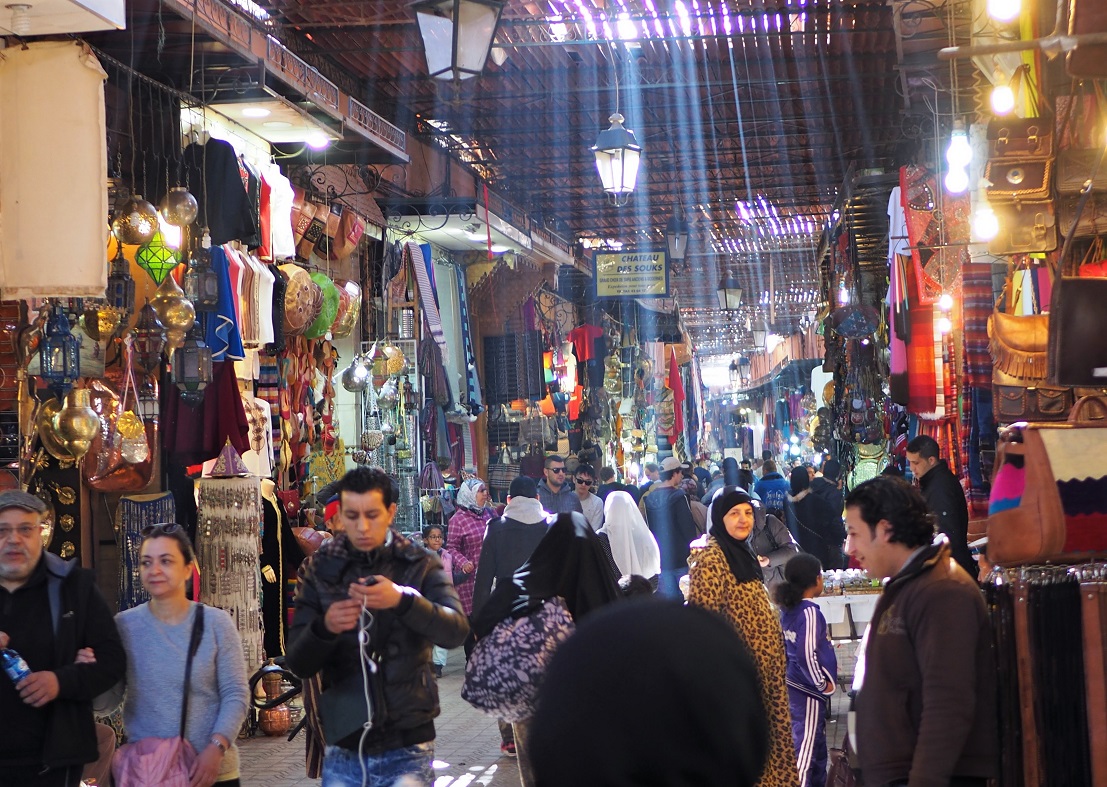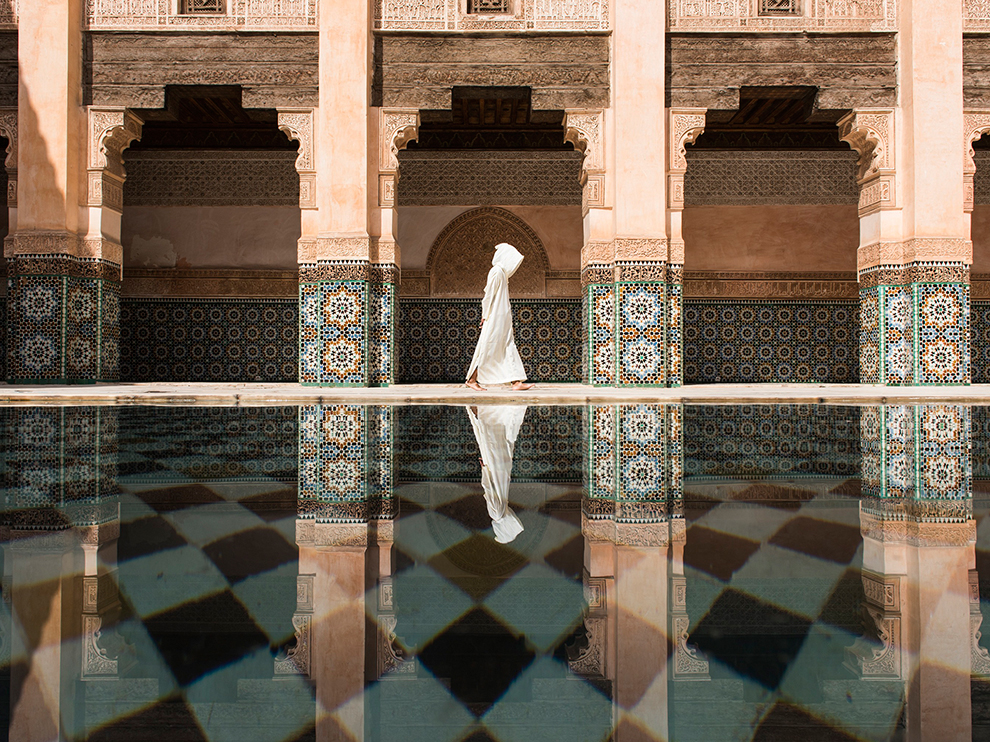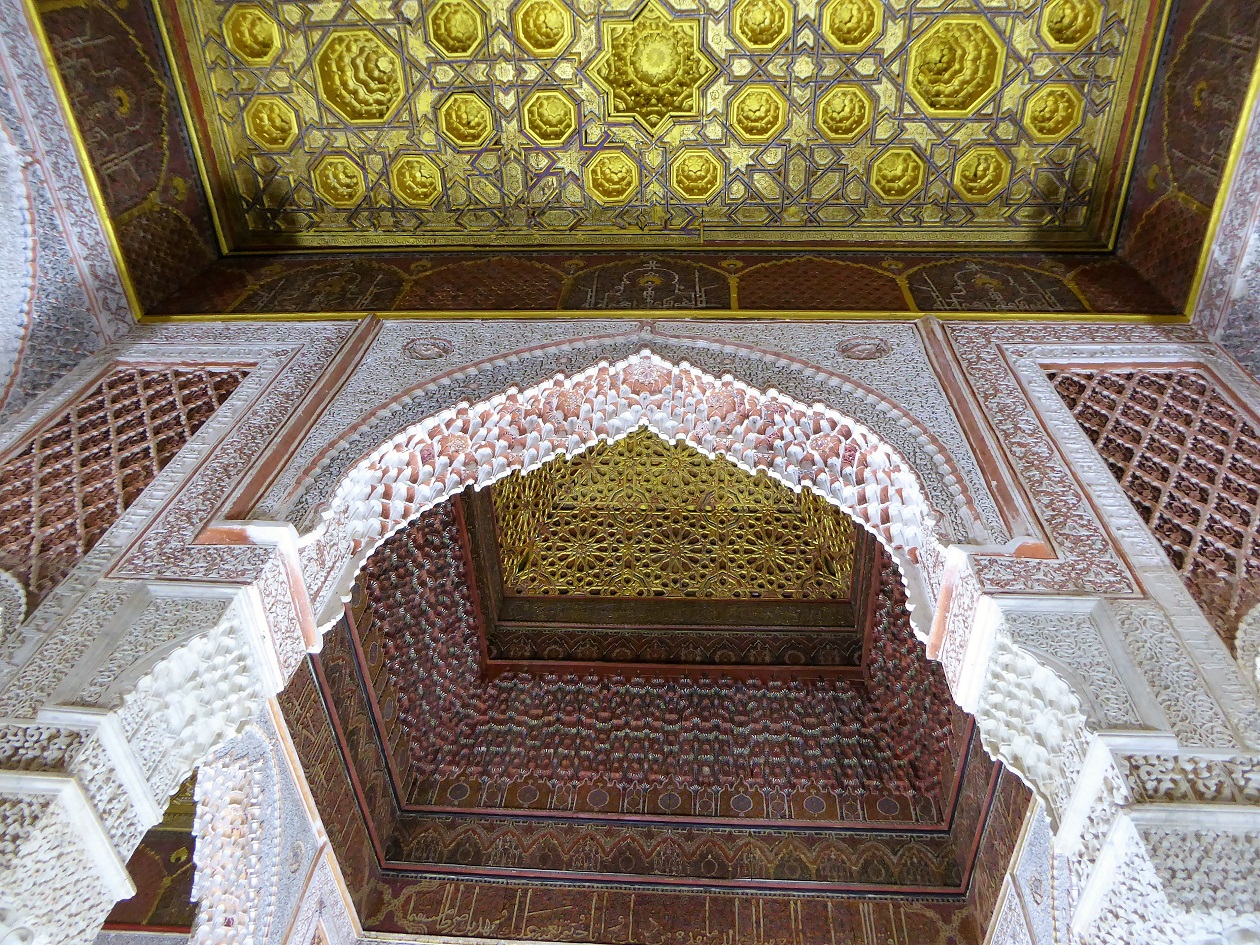There are only two words that can be suitably uttered upon viewing the Jemaa el-Fnaa in Marrakesh for the first time: Holy shit.
Imagine, if you will, a very big parking lot. Now fill it with thousands of people in near constant motion. During the day the square is dotted with musicians, snake charmers, and juice vendors. At night the population doubles and the real action begins. Crowds of robed Moroccans form circles around storytellers and musicians, dancers and artists, boxing matches and carnival games.
And then there are the food stands, a tightly packed line of them offering everything from tajines and kebabs to hamburgers and fries. Oh, and sheep’s heads. Yes, cooked sheep heads stacked up high as you like and a guy with the most leathered hands you’ve ever seen sitting there chopping up the steaming meat (and the brains). It was a popular stand.

Taking pictures is out of the question. If we stopped for even a few seconds we were set upon by merchants or performers trying to separate us from our money. Under no circumstances did we stop to look at the snake charmers. Good gawd, they’ll put the snakes on you. Ok, if you like snakes this is going to be a highlight. (Side note: R saw a snake with a cigarette in its mouth, which was eww). The point is we learned quickly that the hucksters are relentless in the square. Either pay up or keep moving.
To attempt an escape from the square is to enter the souks. For this, you must imagine the largest flea market you’ve ever seen, triple it in size, shrink the passageways by two-thirds, and release into the fray two hundred or so motorcycles and scooters traveling at 20 miles an hour. It’s madness.

There is more to this city than the chaos of the square and the marketplace. A few of the highlights for us were the Ali ben Youssef Medersa, the Bahia Palace, and the Saadian Tombs.
Ali ben Youssef Mederssa
The script over the door of this ancient theological college reads, “You who enter my door, may your highest hopes be exceeded.” Back in the 14th century, when the school was founded, there were 900 students here studying theology and science. Imagine that! Two great tastes that taste great together.
The mederssa no longer houses students, having lost out to its rival in Fez, but it’s a wonderful place to walk around. Even the old dorm rooms are open for wandering through. Yes, their dorms were as small as yours were.


Bahia Palace
This place boggles the mind, both for its artistry and its history. Work began in the 1860s and for fourteen years all of Morocco’s most talented artisans worked on it. In 1908 a warlord moved in and began entertaining French guests here. He really should have known better than to show active colonialists anything that pretty. In 1911, the French decided it was theirs. They kicked out their hosts and established it as the home of the resident general for the protectorate.



The Saadian Tombs
Here is another magnificent display of artistry alongside a beguiling history. The tombs were built by Sultan Ahmed al-Mansour ed-Dahbi just before the turn of the 17th century. His tomb is all Italian marble and honeycombed ceilings, but his mother’s is even more elaborate. Outside are the tombs of his advisers and other high-status counselors. Here’s the crazy part – when the new sultan took over he walled up all access points to the graveyard. The old sultan was literally out of sight and quite soon out of mind too. It wasn’t until 1911 when aerial photos of Marrakesh were taken that anyone knew they were there. Wild.


Our last day in Marrakech happened to be the day the New York Times published this article, which meant we were able to have dinner at the Cafe de Espices before it becomes too popular for the likes of us. It was storytelling night, which was a gift to me. There were two apprentice storytellers working with a master. The master only spoke in Arabic, but his delivery was magical (and thankfully one of the apprentices translated at the end). It was a wonderful way to enjoy a meal after a harried and overwhelming first few days in Morocco.
I can’t imagine how you’re coping with the masses, Tricia. It’s overwhelming in the photos and that’s with no sound or smell! Eeek!
But what wonders you are discovering!
LikeLike
This whole country is amazing, but it’s also super exhausting. I am not a fan of crowds, as you well know. I need LOTS of time in the hotel in between outings.
LikeLiked by 1 person
[…] wrote about Marrakesh in an earlier post, so we’ll be focusing on the other three […]
LikeLike